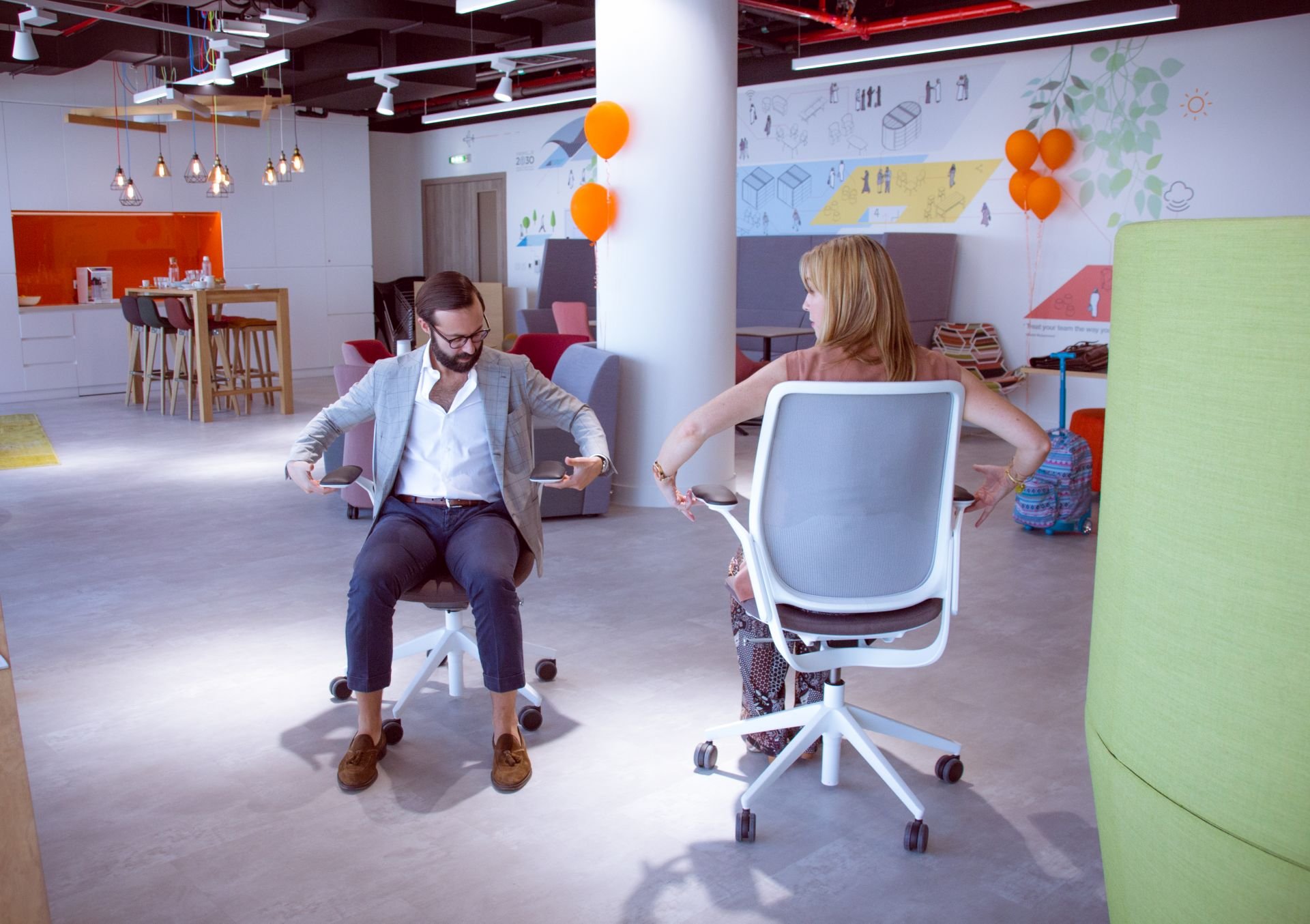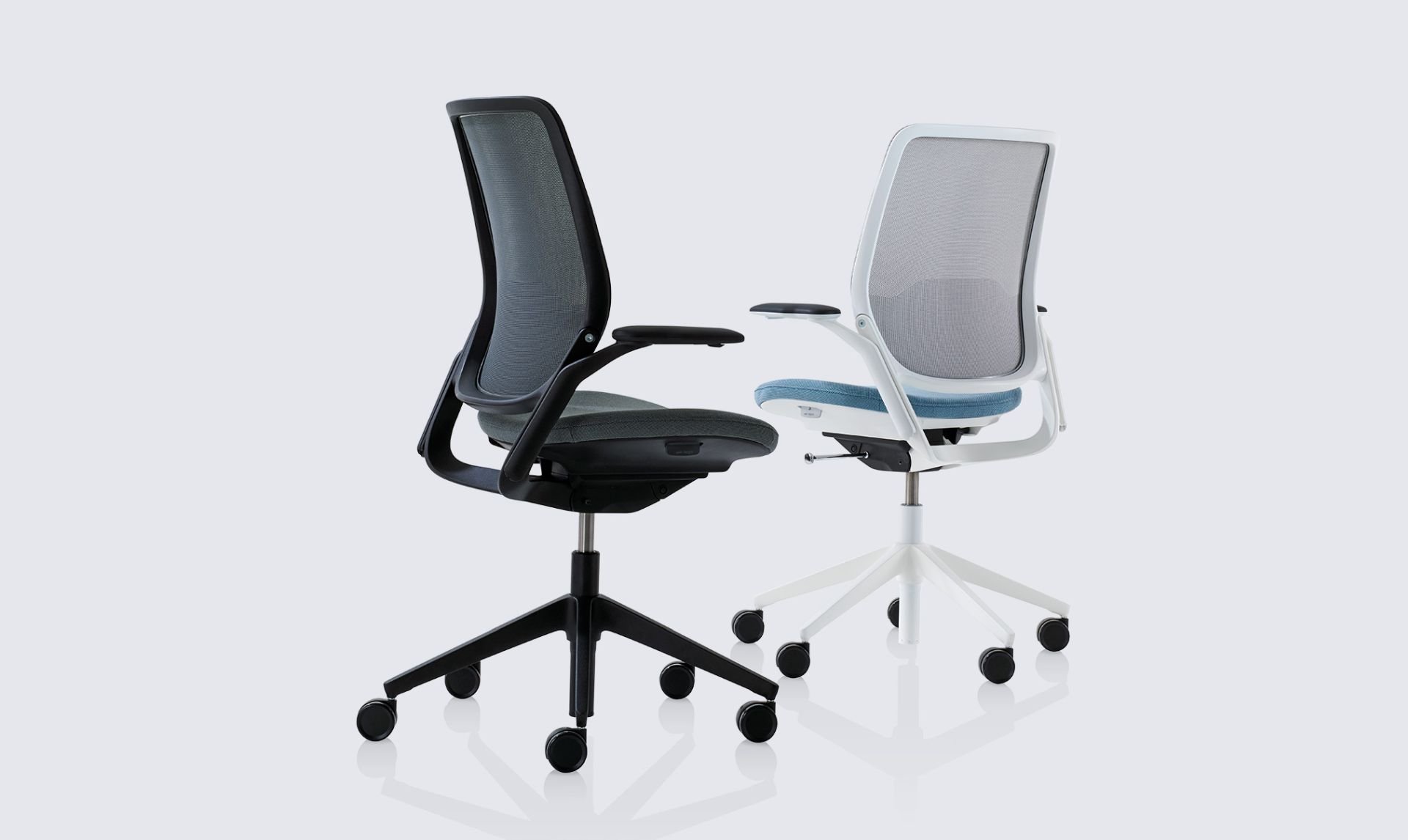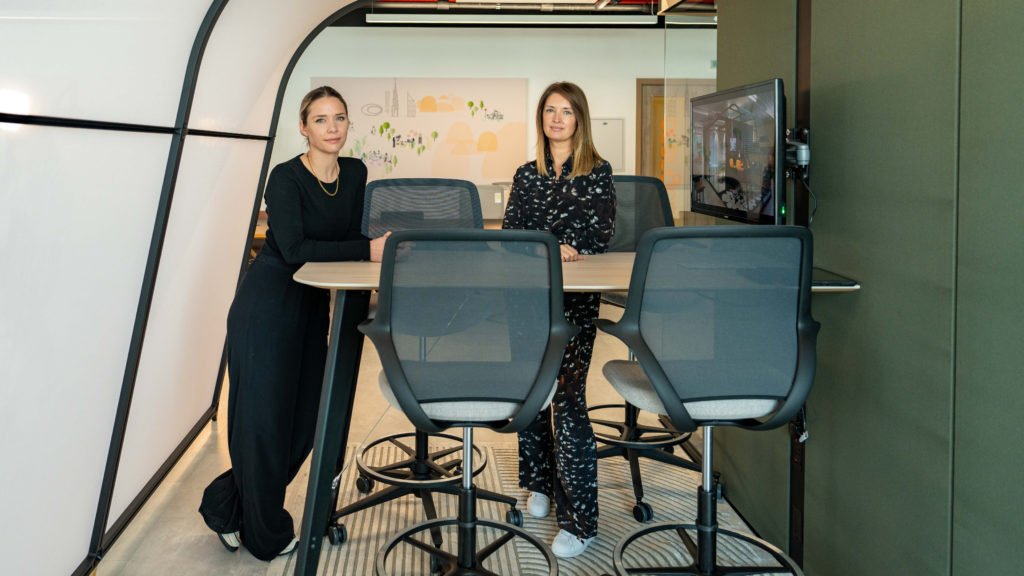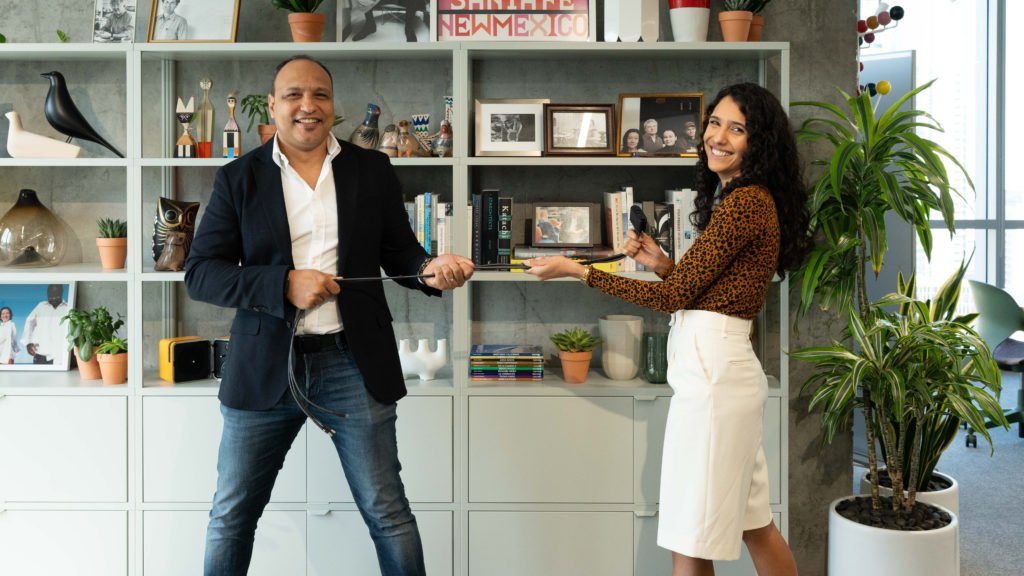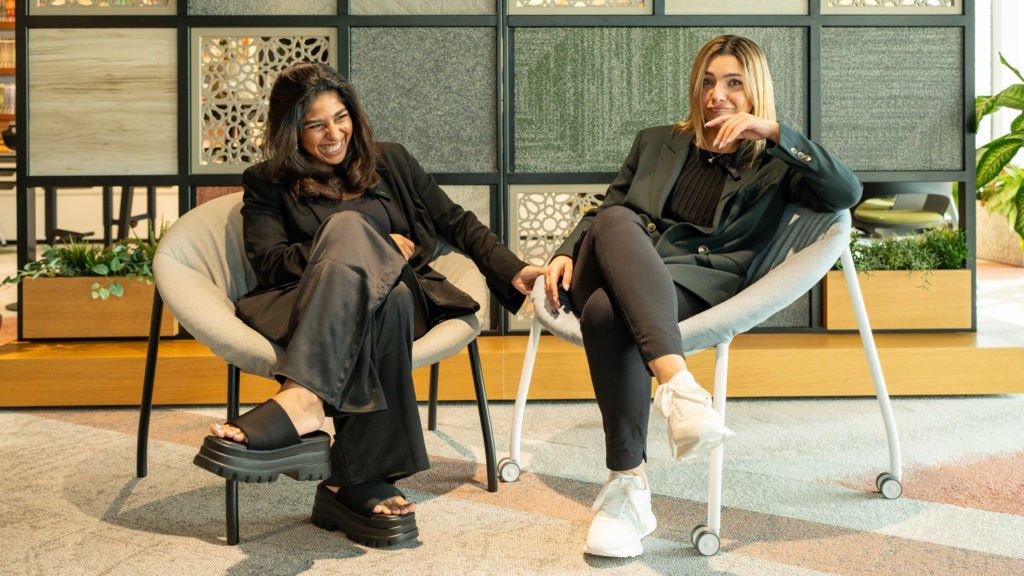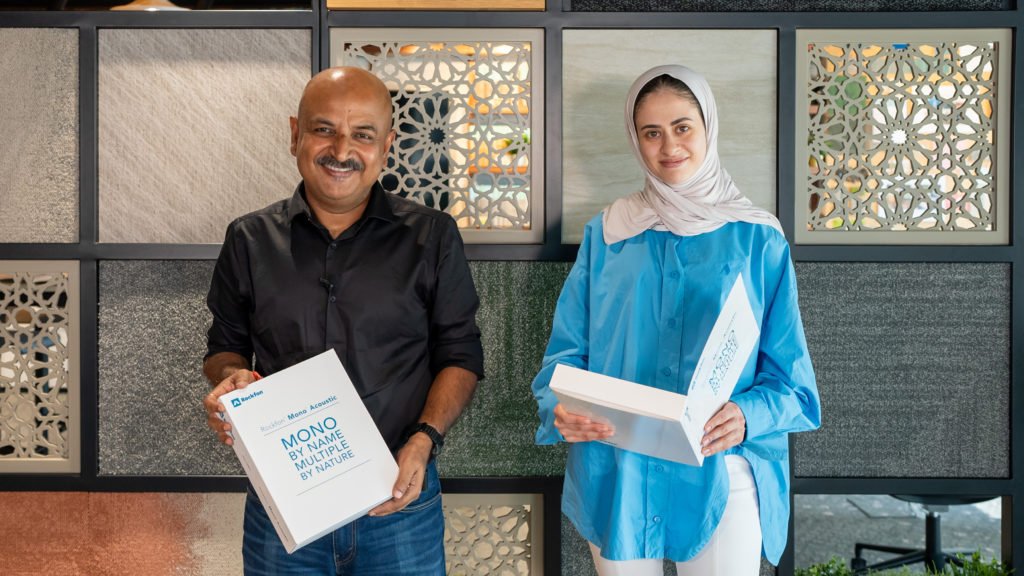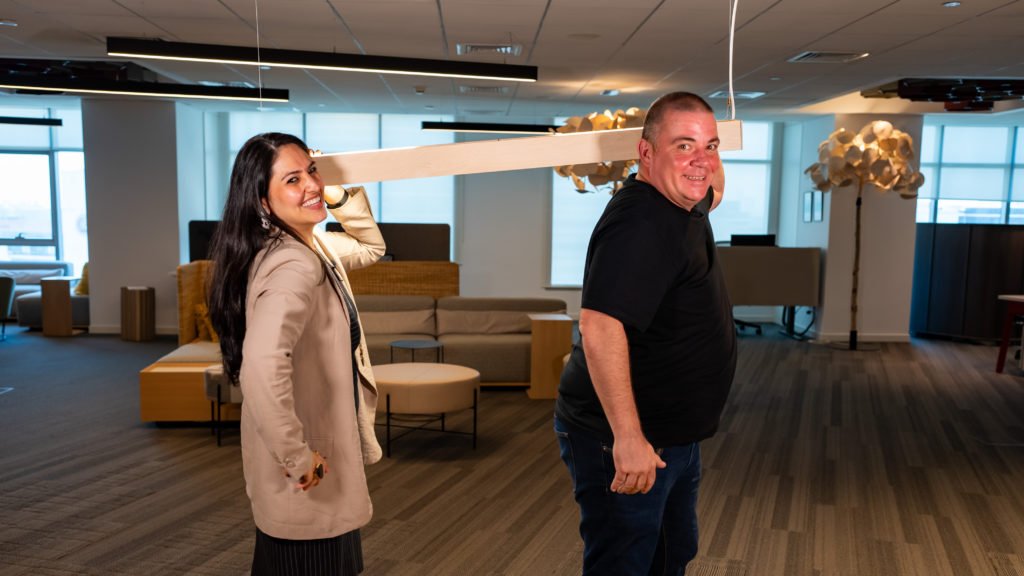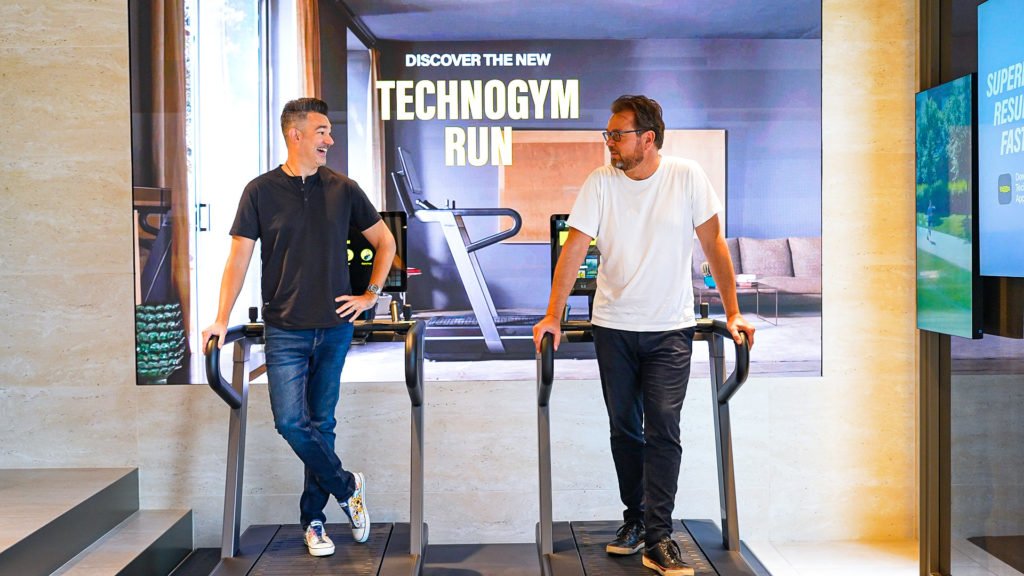David Lessard, design director at H+A, and Valentina Cereda, designer/architect and Feng Shui practitioner, joined Love That Design for an interesting afternoon at the Orangebox Smartworking Showroom in d3. The star of the gathering was Orangebox’s very light, nimble and intuitive chair, Eva, and by the end of our review session, both designers became fans of this sleek, sustainable package. In fact, we could not stop them from waxing lyrical…
If the Eva chair came packed in a lego box, we would not be surprised. Its components can be pulled apart, replaced, and put back together without the need for a manual. Plus, the good looks don’t hurt.
And then the there is the sustainability quotient. Orangebox are known for their highly upheld, green standards. And Eva is the result of intense research towards building an environmentally responsible and sustainable product design. In fact, the starting point of the entire journey was to create a task chair that boasts the most efficient combination of materials and design thinking.
From left: David Lessard, Design Director H+A, Valentine Cereda, Designer, Architect and Feng Shui Practitioner, and Anne Barron, Regional Manager, Orangebox MEA
First Impression
David: Love it. Minimal design that is functional and ergonomic – a true manifestation of form following function with an ethos of sustainability through thoughtful utilisation of materials.
Valentina: Really simple, clean and elegant design, particularly from the back, where most other chairs appear quite bulky. This really sets it apart from other chairs in the market in terms of looks. Plus the fact that that particular chair had a light pink fabric only made me more partial to it!
The Simplicity of Design
Luke Palmer, Product Designer with Orangebox, explains that with Eva, the team decided to retain only the elements essential for the chair’s ergonomics, creating something much simpler. And by employing a clever weight balancing mechanism, they were also able to dispense with knobs and levers, paring down the design still further.
This is particularly evident in the backrest and arms, where the yoke follows a lovely linear journey, providing support where needed, yet maintaining a ‘lightness’ to the look. (The stormtrooper resemblance in the white coloured ones only added bonus points in our book!)
“Over the years, task chairs have become quite heavily engineered, with a lot of levers and gadgets,” says Anne Baron, Regional Manager, Orangebox MEA. “You can always design onto design, but to strip it back is difficult.” And as David mentioned, people often assume minimalism requires less effort, where on the contrary it actually demands a lot more.
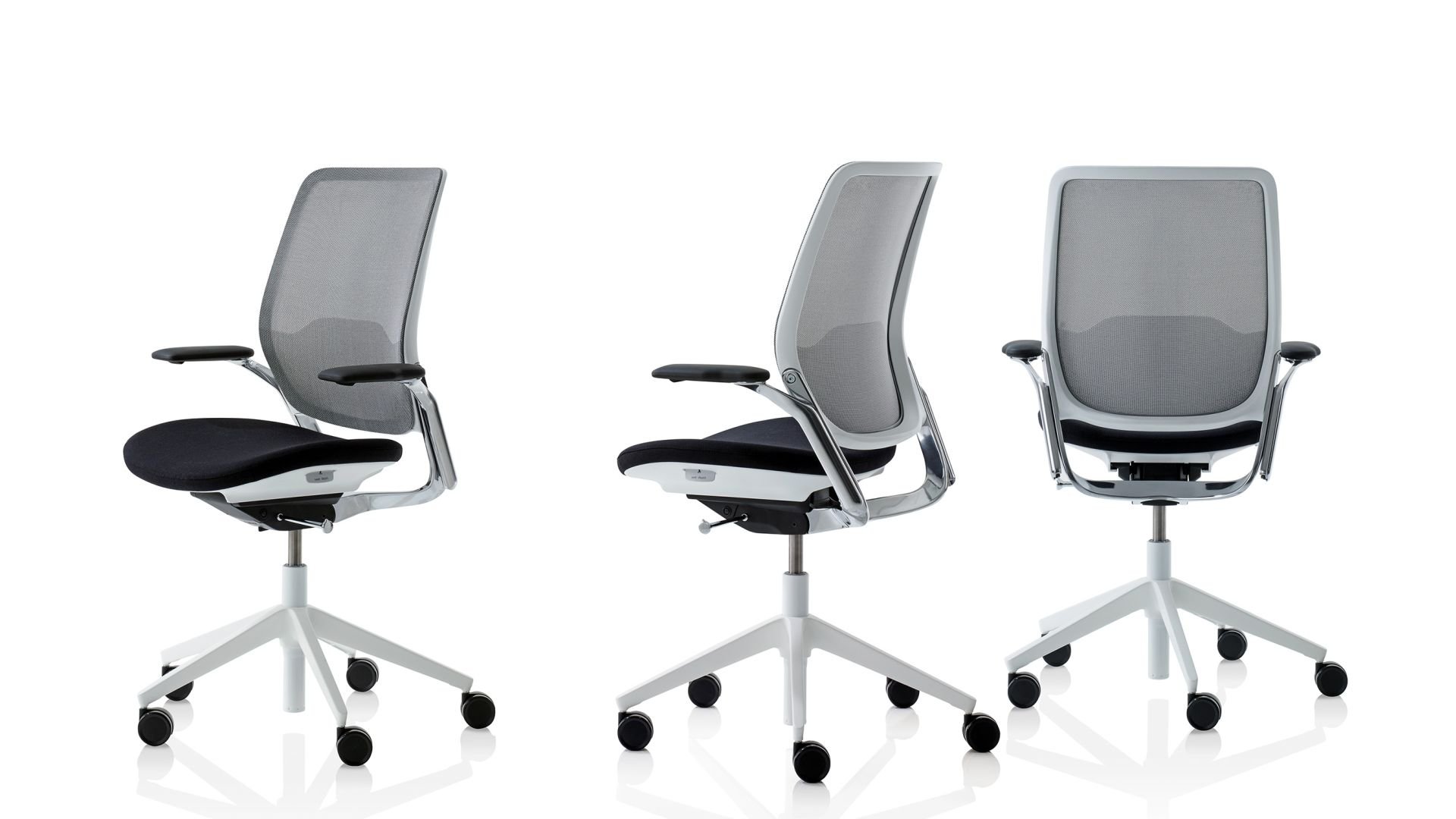
Intuitive Features
“Research shows that over 90 percent of users don’t adjust their chair once they sit in it,” says Anne. “So it was really important for us to create a chair that was as intuitive as possible.”
A weight balancing synchro-mechanism, adjusts the tension in the back according to the weight of the person sitting in it, so it personalises the chair straight away. Pretty neat. Secondly, the mesh on the back has five different zones knitted-in for support (denser in the lumbar area, for additional support). “In the agile workspace, we wanted to make sure that this was a chair that could adapt from one user to another in an instant, without adjustments,” says Anne.
Design and Aesthetics
David: “The minimal, streamlined aesthetic seems to be derived from the ergonomics without appearing too technical or engineered. Similar to a sports car design, there seems to be the perfect balance between form and function without compromise. You can imagine a field of these chairs in an open office without dominating the space. Conceivably, it is as light as it possibly can be, both in terms of form and material.
Valentina: My favourite part of the chair is the simplicity of its design. There are only a few adjustments needed, and that really speaks to me. I believe that that is its main appeal in the market as well. If I had to choose one task chair for my home, it would be the Eva. In my opinion, aesthetically, it is easily the nicest.
The Floating Arms
The arms employ a simple ratchet system, which is deliberate to keep the design as simple and minimal as possible. One click on the armrest lets it drop; you can then lift it up to any level you prefer. The movements in this mechanism are indeed very smooth, and quite addictive to play with (once you get the hang of it though, as it takes a few tries). We are extremely partial to the clicking noise, which does add a definitive aspect to the movement.
Height Adjustment
Catering to a global clientele that covers Scandinavia to Asia and everywhere in between, the seat height supports a broad demographic (420 to 570 mm). What we found quite impressive was Eva’s ability to cater to height adjustable desking as well, fitting in perfectly with the agile office concept. “To relieve pressure off the hips, you can allow yourself to perch in a near standing position,” Anne explains.
Travel Limiter
While the flowing back is good for blood circulation, and a recommended setting by chair manufacturers and ergonomists, in a market of millions not everyone would want this option. Some people may prefer more ownership of their chair, so they can choose their own level of recline (for example when writing reports or any other activity that requires a person to sit upright). “There is a controller under the chair that limits travel and locks at three different positions,” says Anne, “and it always comes back up with you. However, we do encourage users to maintain the setting at ‘Open’ as much as possible.”
Usability and Comfort
David: This chair is more intuitive than most with height adjustment and lumbar effortlessness in operation. The unique ratchet design takes getting used to, but once mastered, I suspect you will find it hard to go back to a more mechanical adjustment. And what is also truly innovative is the perforated support that instantly responds to the weight of the individual.
Valentina: The main feedback I hear from clients is that their task chair is just far too complicated to use with so many mechanisms to adjust. What I like about this one is that it is so comfortable and yet so intuitive, that it takes away a lot of that headache. I would wholeheartedly recommend this to my clients. The only feature I needed a little bit of help with was the arm ratchet system. But once you get the hang of it, it’s super easy to adjust, and quite addictive! I also like the additional lumbar support that can be added to the mesh back frame, which allows you to further adjust for those who would like a bit more control in the lumbar area.
Wellbeing and Sustainability
The clue is in the kind of materials used, as well as the breakdown of form into replaceable components, all of which contribute to longevity and sustainability ratings. The materials, for example, are mainly plastic and aluminium, with a distinct lack of chrome (something that could have upped the bar in sexier, more luxurious looks, but would seriously hurt the planet). We commend Orangebox on sticking to their green playbook, keeping it simple, and not giving in to gadgets and gimmickry.
“Most clients would want to change their chair because of damage to the mesh or the seat. Or they need a brand refresh, which normally means a change of colour,” says Anne. The Eva on the hand, has components that can be easily taken apart, and the parts, seating, or mesh, changed at any time. This, in our view, is fantastic from a sustainability standpoint, as it extends the life cycle of the chair. Anne further points out that accessories can be added to modify the chair for different demographics and users, such as an adjustable lumbar support for those with lower back concerns or a coccyx cutout in the seat. This further allows the user to hold on to their chair, rather than opt for a new one, yet again prolonging its lifespan. Great for sustainability, not so good for business. But that is where Orangebox excel – at providing quality products with a longer life, and not keeping the focus entirely on the bottom line. Valentina comments that before choosing any product, she always looks into the manufacturing process. “It’s an important part of our design ethos, and Eva really ticks all the boxes,” she says.
Favourite Feature
David: The ratchet design of the adjustable arms and the foldaway armrests stand out. One does not realise how often these items need to be adjusted until you have been provided with an effortless mechanism that seamlessly goes from under desk to floating in an open plan space. The one touch, one hand operation makes the chair very versatile in multiple seating scenarios, which contemporary offices now need.
Valentina: I love that you can take the entire back out, as well as the seat, remove the materials and wash them, and so very easily put them all back together! I so often hear of people changing their chair because of oil or coffee spills on the fabric, which is such a waste of a perfectly functioning piece of furniture. Plus the mesh makes cleaning a breeze versus a plush, padded surface that would likely need to be sent back to the factory for a professional hand.
Eva’s ease of use also greatly adds to wellbeing, as David points out. “Higher green ratings is something we are always looking to achieve in the projects we design. We would never compromise human health and experience, so Eva certainly fits the bill there.
Its ease of functionality and intuitiveness reduces stress levels that much more. Stress can come from many factors and even the little things that you do throughout the day, whether it’s queueing for coffee, or getting lost in a building. So a chair that won’t make you go nuts, since you don’t have to adjust it, helps wellbeing as part of a bigger picture.”
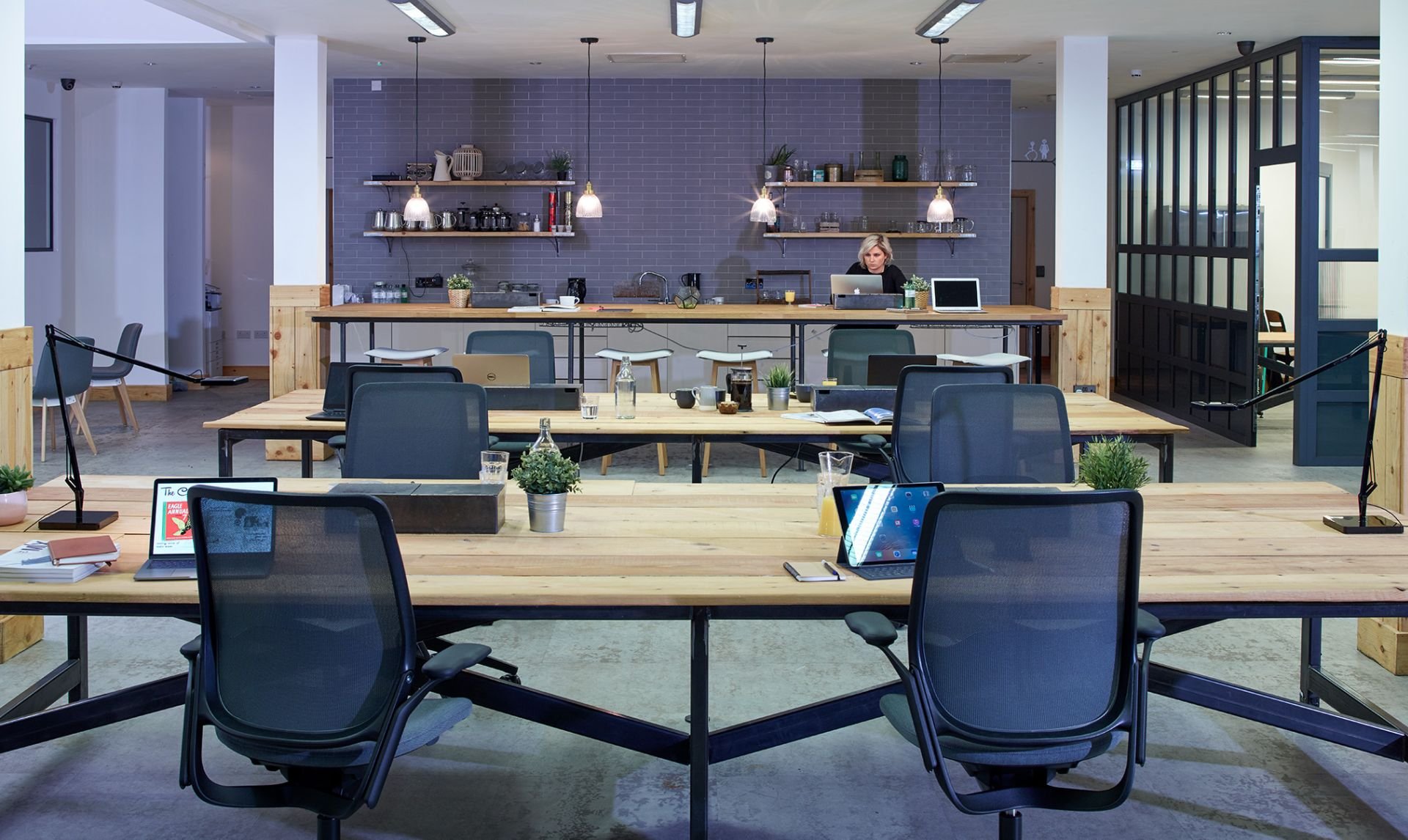
Lumbar Support and Seating
Possibly one of the coolest features of this chair is the knitted mesh back that, ergonomically speaking, is great for precise give and support, exactly where it’s needed. It is also fantastically easy to clean, take apart as a component, and replace. And, as Luke explains, during the manufacturing process, the mesh cleverly shrinks to almost solid plastic around the edges, eliminating the need for additional parts and sewing processes, and making it one of the easiest materials to assemble and recycle.
It has five different support zones, the lumbar obviously being the one with the tightest knit for greater hold. As you move, the lumbar moves with you which, as David mentioned, is a godsend for his S-shaped spine that makes it quite difficult for him to do planks in the gym, but would find gracious lumbar support in the Eva!
Price
The majority of the chair’s cost can be attributed to the wide use of aluminium to create lightness in both weight and aesthetics, but still give strength. The price tag, given its long lifespan, is actually then quite okay. And our designers seem to agree. David thought that not only was it just right for the chair, but also good value. And Valentina went as far as to say that she thought it was underpriced, considering how much thought and research went into the paring down of design.
So What Do We Think…
All parties in this review agree that this is one chair we were hard pressed to find fault with. It probably won’t be on a calendar for the sexiest looking any time soon, but the Eva replaces external gadgetry and bling with an unassuming lightness and simplicity of design, followed by ease of use and comfort that has you hooked from the moment you sit. Plus the extremely high sustainability quotient just makes it the true hero of the show.
When questioned about a family of chairs for Eva as an option to furnish larger interior design projects, Anne informed us that the Eva can be upgraded to polished metal with a headrest for a more luxurious look. The Eva does not come in a visitor chair option.
“However, clients have bought this as a visitor chair as well, since it fits in an agile work environment,” she says. For those looking, Orangebox do offer the Workday from their portfolio, which is a mesh back visitor chair, as a complementary option to the Eva, should the need arise.
Any Suggestions?
Valentina: If I were to introduce one element to this chair, it would be a coffee holder. Because these days, the agile workspace has become ever so popular. I quite often work away from my desk and use little side tables to place the laptop, or keep it in my lap and move around. I would love a coffee mug holder that could be pulled out (much like an airplane seat), and tucked away when not needed.
David: With such a simple and intuitive design, one would expect a wider range of finishing options for all components of the chair. And although there are several metal and base finishes available, the backrest structure and mesh are limited to black and white. I would hope to see more in the future.

